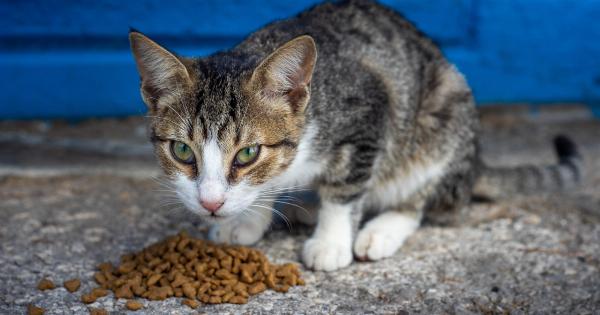Toxoplasmosis is a parasitic infection caused by the Toxoplasma gondii parasite. While this infection is commonly associated with cats, it is important to note that the likelihood of contracting toxoplasmosis from your pet cat is relatively low.
In this article, we will delve into the specifics of this infection, its transmission, and the precautions you can take to minimize the risk.
Understanding Toxoplasmosis
Toxoplasmosis is caused by a microscopic parasite called Toxoplasma gondii. This parasite can infect a wide range of warm-blooded animals, including humans.
However, it can only complete its life cycle in cats, making them the only definitive host for this parasite.
Most healthy individuals who contract toxoplasmosis experience mild symptoms resembling flu-like illness or no symptoms at all.
However, the infection can pose serious risks to individuals with weakened immune systems, such as pregnant women or those living with HIV/AIDS.
The Transmission of Toxoplasmosis
The most common route of transmission for toxoplasmosis is through ingestion of contaminated food or water. The T. gondii parasite can be found in undercooked or raw meat, especially lamb, pork, and venison.
Additionally, fruits and vegetables can become contaminated if they come into contact with soil or water containing infected cat feces.
Another less common route of transmission is through direct contact with cat feces.
The parasite takes one to five days to become infectious after being shed in cat feces, which means that the risk posed by day-to-day contact with your cat is relatively low.
Preventing Toxoplasmosis Transmission
If you are concerned about contracting toxoplasmosis from your pet cat or if you fall into a high-risk category, there are several precautions you can take to minimize the risk.
1. Practice good hygiene
Washing your hands thoroughly with soap and warm water after handling your cat or cleaning their litter box is crucial in preventing the transmission of the T. gondii parasite.
Avoid touching your face or mouth before washing your hands to reduce the risk of inadvertently ingesting the parasite.
2. Avoid raw or undercooked meat
Properly cooking meat is essential, as it eliminates the risk of toxoplasmosis transmission. Make sure to cook all meat, especially lamb, pork, and venison, to safe internal temperatures.
3. Avoid cross-contamination
Keep raw meat separate from other food items during storage and preparation to prevent cross-contamination. Use different cutting boards and utensils for raw meat and wash them thoroughly with hot soapy water after use.
4. Wash fruits and vegetables
Thoroughly wash all fruits and vegetables before eating them. This practice reduces the risk of ingesting any potential T. gondii parasites that may have contaminated the produce.
5. Delegate litter box duties
If possible, ask someone else to clean the litter box while you are pregnant or have a weakened immune system. If you must perform this task, wear disposable gloves and wash your hands thoroughly afterward.
6. Indoor cats have lower risk
Indoor cats have a lower risk of contracting toxoplasmosis compared to outdoor cats. This is because they have limited exposure to potential sources of the parasite, such as raw meat or infected soil.
If you have a high-risk situation, keeping your cat indoors can help reduce the chances of exposure.
When to consult a healthcare professional
If you develop flu-like symptoms, such as fever, muscle aches, and fatigue, and suspect that you may have been exposed to toxoplasmosis, it is essential to consult a healthcare professional.
They can evaluate your symptoms and perform appropriate tests to confirm or rule out the infection.
Conclusion
Contrary to popular belief, the risk of contracting toxoplasmosis from your pet cat is relatively low if proper hygiene practices are followed.
By practicing good hygiene, avoiding raw or undercooked meat, and taking necessary precautions, you can minimize the risk of toxoplasmosis transmission. If you have concerns or fall into a high-risk category, it is always best to seek healthcare advice. Remember, a healthy relationship with your feline companion can be maintained while ensuring your well-being.






























